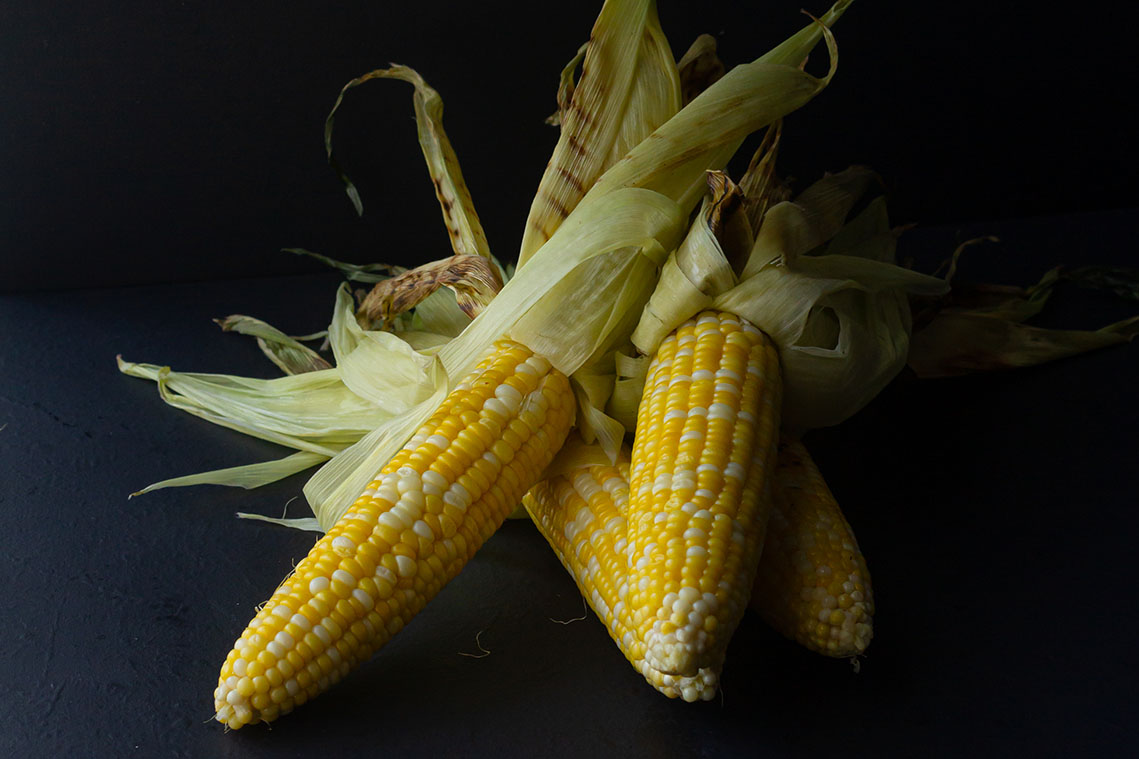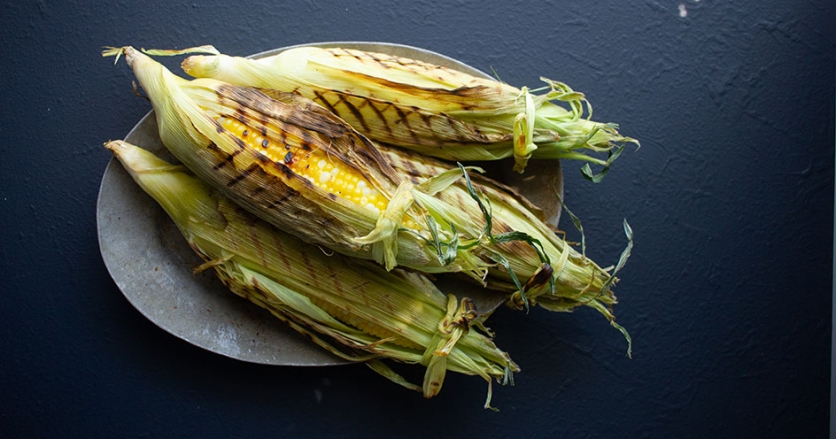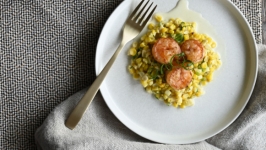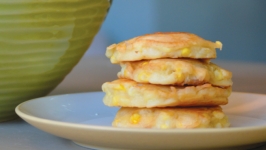Corn Connoisseur
When slathered with butter, the sweet salty combination that is corn pops in your mouth. There’s no way to be tidy about things. You just dive in and enjoy. And while savouring corn in its natural form is perhaps our favourite way to enjoy it, the versatility of this vegetable lends itself to all sorts of preparations, from salads and soups to desserts and baked goods.
All parts of an ear of corn are useful — the husks, while not edible, can be used for steaming tamales or as part of the cooking method for the corn itself. Those annoying silks are in fact edible, which goes some way to absolving them of the tedium they present in preparation. And before you throw out the cobs, know that they can also be used to make corncob jelly.
When it comes to cooking, everyone has their method, but here are two to master.
Boil
For quick, convenient cooking for a crowd, boiling has a bit of an edge. It also allows you to cut your cobs to size if you want to make smaller portions and stretch your corn to feed a larger number. Start with a large pot of boiling salted water, being sure to allow for water displacement as you add the corn, cleaned of its husks and silks. Boil for five minutes, drain and enjoy.
Grilled in their husks
This method takes a little longer, but has the edge when it comes to flavour. Grilling the corn in its presoaked husks steams it slightly, but gives a smoky charred flavour that’s hard to beat. Peel back the husks, leaving them attached, and remove all the silk. Remove one or two of the finer inner husks and set them aside. Now gently enclose the corn back in its husk and soak in a large pot or bowl of water for 20 to 30 minutes along with those inner husks you’ve set aside. After the time has elapsed, tear those tender inner husks down the middle and tie the thin ends together. Drain the water from the ears of corn and use the tied husks as “ribbons” to secure the husks on each ear of corn. Place the ears of corn on a hot (375 F to 400 F) pre-oiled outdoor grill. Grill on high heat, turning occasionally for 20 to 30 minutes. To eat, peel back the husks and use them as a handle to help you hold the corn while you savour that succulent, juicy, smokiness.
That pesky silk
Whether you are planning to remove the husks or keep them on, you’ll need to remove the silk before preparing your corn. To make this job a bit easier, grasp the silks from the top and pull firmly towards the bottom of the cob removing as much as you can in two or three firm swoops. Remove any silks that linger on the cob with a clean stiff brush or hold the cob over a gas flame to singe the silks, which will then fall off when given a swift wipe with a tea towel.
You can reserve the silk to make corn silk tea, which some use as a natural health remedy or it can be battered and fried to use as a garnish. Simply soak the washed and dried silk threads in a mixture of egg and soda water before dredging lightly in seasoned flour. Squeeze out the excess egg mixture before you dredge and use a light hand to very lightly coat the threads before dropping them into hot oil for a few seconds. As they brown and crisp, use a fork to turn them and then remove them to a paper towel to drain. Use on top of soup or as a garnish for salad.
Corn and jalapeño fritters with corncob jelly
One of the first things I learned to cook as a young person was corn fritters. The recipe came from the pages of a well-leafed copy of The Laura Secord Canadian Cook Book that my mother was given when we first came to Canada. Inspired by that recipe, my version uses smoky grilled corn and buttermilk instead of creamed corn, and Serrano pepper and chives for a spicy kick. Serve them with corncob jelly for a touch of sweetness and more sun-kissed corn flavour.
For the jelly
This recipe uses Pomona’s Universal Pectin, a brand that is suitable for lower sugar recipes and includes a calcium water preparation to help the jelly gel.
8 ears of corn, grilled
5 cups water
1 teaspoon Pomona's Universal Pectin
2 teaspoons calcium water, prepared according to package directions
½ cup sugar
Remove kernels from cobs and set aside 1 cup for the fritters and the rest for another use. Cut the cobs in half and place in a pot with 5 cups of water. Bring water to boil and set time for 10 minutes. Drain water and cobs through a cheesecloth, reserving the corn water. You should have about 2 cups. Top up the corn water with boiling water from the kettle if you don’t quite have that amount. Place the corn water in a large saucepan and add the calcium water (made according to package instructions). Mix the pectin and sugar together in a small bowl and add to the corn water. Bring the mixture to a boil on high heat stirring occasionally. Meanwhile, sterilize one 250-millilitre Mason jar and 2-piece lid. The jelly is ready when a spoon or spatula dragged through the mixture leaves a trail that does not fill in, and when the mixture falls from a spoon in sheets instead of drops. Pour the jelly into the sterilized jar and seal.
For the corn fritters
11/3 cups flour
1½ teaspoons baking powder
½ teaspoon salt
1 egg, beaten
1 cup buttermilk
1 cup grilled corn kernels
2 teaspoons Serrano pepper, minced
2 tablespoons chives, chopped
1 tablespoon water (as required)
3 tablespoons oil, sunflower or canola
In a small bowl, whisk together flour, baking powder and salt. Make a well in centre of the dry ingredients and add egg, buttermilk, corn, pepper and chives. Mix with a fork until just combined. Add water at the end to thin batter slightly. Heat the oil in a large cast iron frying pan on high heat. Drop heaping spoonfuls of the batter into the oil and cook for a minute or two or until bubbles appear and the edges turn brown. Flip using a spatula or two forks and cook the other side. A word of warning — occasionally, the corn kernels can pop and sputter in the high heat, sending out a shot of hot oil so make sure you are well protected with long sleeves and an apron and stand well back while frying. Drain the fritters on paper towel before serving with a dollop of jelly.








